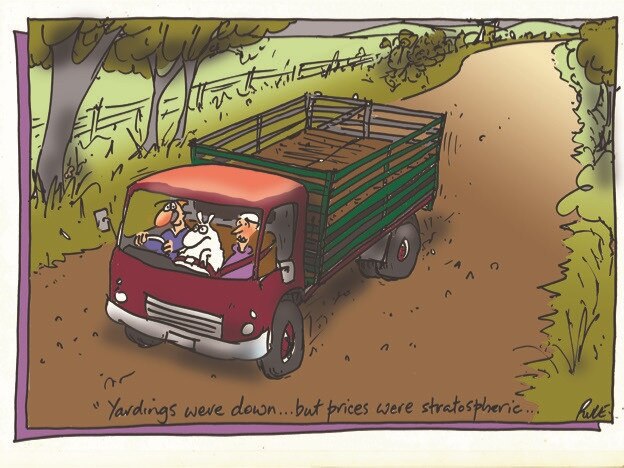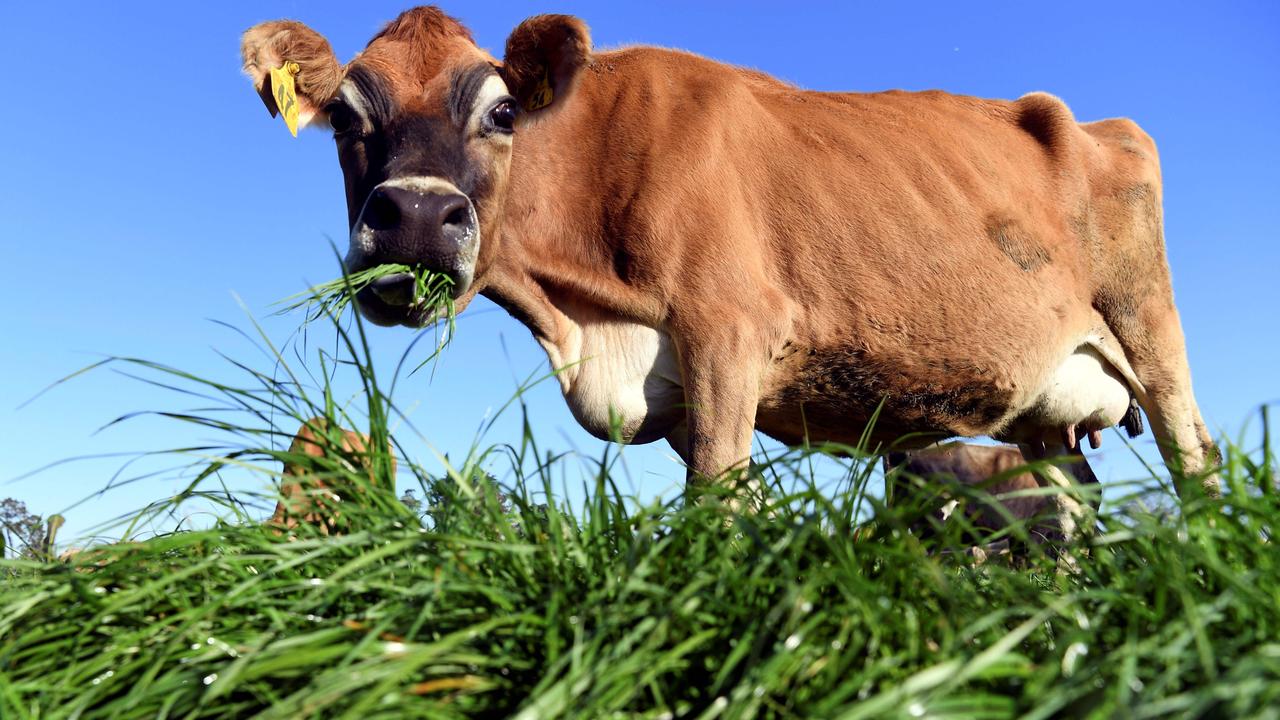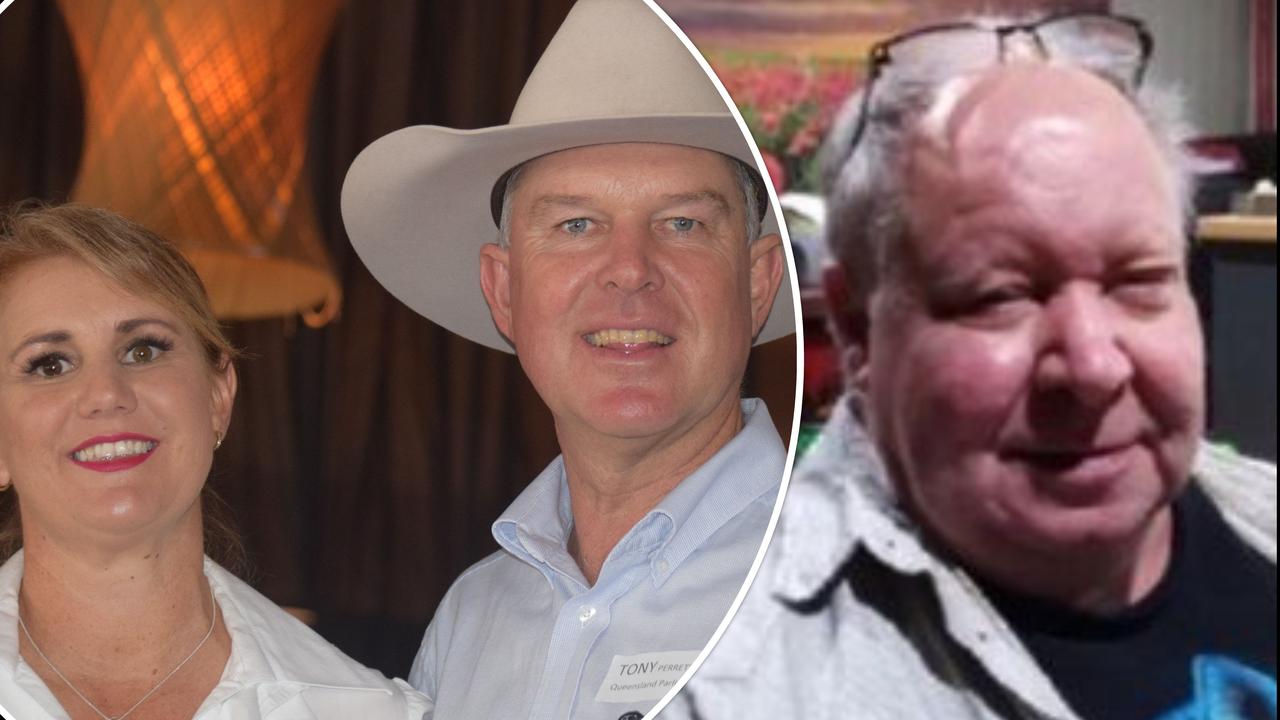Lamb prices skyrocket to more than $10/kg at saleyards
Prices for lamb have soared, but experts warn the peak may be unsustainable. Here’s why.

LAMB prices have roared into near-record territory with saleyard prices topping the magical $10/kg mark this week.
The rates, which some experts rated as the dearest they’d ever seen, while also warning the market could be near the top of its cycle, have been attributed to a shortage of supply combined with strong export demand and a lower Australian dollar.
In the past week:
TRADE lambs averaged $10/kg carcass weight and peaked at almost $11/kg at Bendigo, and topped at $11/kg and averaged $9.50/kg at Dubbo in NSW.
HEAVY lambs sold to a local saleyard record of $301 a head at Horsham.
THE benchmark Eastern States Trade Lamb Indicator hit 856c/kg carcass weight — up 65c/kg in a week. It is trading $1.27/kg higher than last month and a whopping $2.50/kg — or 41 per cent — more than this time last year.
ALL lamb indicators, except for Merinos, topped more than $8/kg. The national heavy lamb indicator jumped more than 30c/kg to $8.71/kg — an increase of 43 per cent on this time last year.
THE eastern states mutton indicator hit $5.95/kg — a premium of $1.26c/kg or 27 per cent on last year.
Ellis Nuttal & Co director Kevin Stratton said Monday’s Bendigo market was the “dearest lamb sale” he had ever witnessed while Colbinabbin farmers Shane and Robyn Ryan described the $290 a head they received for the best of their lambs as “unbelievable”.
“I’m over the moon,” said Mr Ryan, who received $110 a head more for his lambs than he did in February.
Rodwells Bendigo livestock manager Nick Byrne said the higher prices were “supply related”.
At the corresponding Bendigo sale last year trade lambs averaged $6.43/kg for heavier types.
The Weekly Times understands major processors were buying up larger numbers in Bendigo on Monday because a shipment of lambs was prevented from leaving Tasmania due to bad weather.
Mecardo market analyst Angus Brown said lamb prices had been strong most of the year, driven by solid export demand and a weaker Australian dollar that was yesterday trading at US69.1c compared to US76c this time last year.
Mr Brown said while the trade lamb indicator could eclipse its $8.84/kg peak last September, and perhaps even hit $9/kg, it would soon “reach a level where it is unsustainable”.
Mr Ryan said the while the price was great for producers it was not so good for buyers or meat processors.
“It makes meat expensive for the end consumer,” he said.

Rodwells Wimmera manager Wayne Driscoll said while it was “unknown” how high prices could go, he hoped processors weren’t priced out of the market. “We are now seeing the prices reflect what producers are putting in (in terms of feed),” Mr Driscoll said.
Mr Byrne said the market was likely near its peak with processors feeling the squeeze.
He said with prices “being so good”, about 90 per cent of lambs were currently being sold through saleyards, rather than direct to processors.
“We all expected lamb to get to these rates but it is a bit of a worry for processors, as it’ll be a long three months for them as we don’t expect any great numbers of new-season lambs until September,” Mr Byrne said.
He said early suckers from NSW were normally sold in July or August, but this year due to drought he had been told it was unlikely they’d be available.
Mr Byrne said mutton prices were also “amazing”.
“It’s hard to fathom we couldn’t get $6/kg to $7/kg for the best prime lambs not that long ago.”
Meat and Livestock Australia senior market analyst Adam Cheetham said last year’s price increase happened because producers struggled to finish lambs, whereas this year there was an expectation for lamb supply to contract and that has started to “come to fruition”.
While Mr Cheetham said there were fewer lambs at saleyards this week, compared to the same time last year, it was only a slight fall.
“Lamb prices are going off … it’s hard to predict where they will go, but if we see the same margin of increase as last year we could be pushing those highs (of last year),” Mr Cheetham said.


